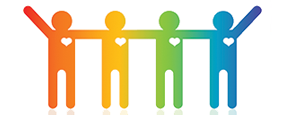Brain injuries are a common incident in many sports. From biking to playing basketball, football, baseball, or a variety of team sports, there is always the chance of taking a blow to the head. It can happen in a fall or from another player. A concussion is one of the most common head and brain injuries. This bruising of the brain can occur when a child is struck in the head or shaken forcefully during a moment of impact. The severity of the trauma to the brain varies in each case. Be on alert for any of the following symptoms:
- Dizziness
- Nausea
- Pronounced fatigue
- Severe Headache
- Double vision
- Loss of Consciousness
- Slurred Speech
- A Ringing in the Ears
- Temporary amnesia
- Confusion
Once a child has suffered a concussion, there is a greater likelihood that it will happen again. It is important that a concussion is diagnosed, a child is closely monitored for complications, and any pain is managed. Rest and time for healing is crucial. There should also be a follow-up treatment to assess possible long-term damage.
The Potential for Serious Brain Trauma
In addition to bruising of the brain, children can suffer from bleeding on the brain or epilepsy. Permanent, severe damage could affect a child’s cognitive and physical abilities. Brain trauma is a serious matter that should be avoided at all costs. If at any time an injury to the brain is suspected, even if it seems of little consequence, be sure to get medical attention. In the event that a child is violently shaken during an athletic event, such as in a football tackle, there is always the potential for brain trauma. Make sure the proper tests are run and you have a physician’s expert opinion. You do not want to play a guessing game with your child’s brain.
Taking Preventative Measures
The best thing you can do for your child is to take precautions. Make sure you purchase protective gear of good quality. Look into new technology in helmets, such as anti-rotation helmets, that provide additional protection against brain trauma. Your child should wear a helmet that fits properly for skiing, skateboarding, roller-skating, and cycling. Don’t forget to include a helmet during football, even games of tackle in the backyard. When batting, your child should have a batting helmet. It won’t hurt to include a helmet for the entire game. Use common sense when you join in games, showing a good example as you wear your own protective gear. Also, advise your children to use their common sense. They should avoid situations where they will be up against someone who is much stronger or bigger. Tackling and wrestling should be performed under a coach’s supervision with complete safety gear.
You can’t prevent every type of injury, but the severity is more likely to be minimized when your child is protected. Make safety your top priority, allowing everyone to use their brains. When an injury occurs, provide supervision, ice, pain control, and rest. Closely monitor your child for potential complications.



